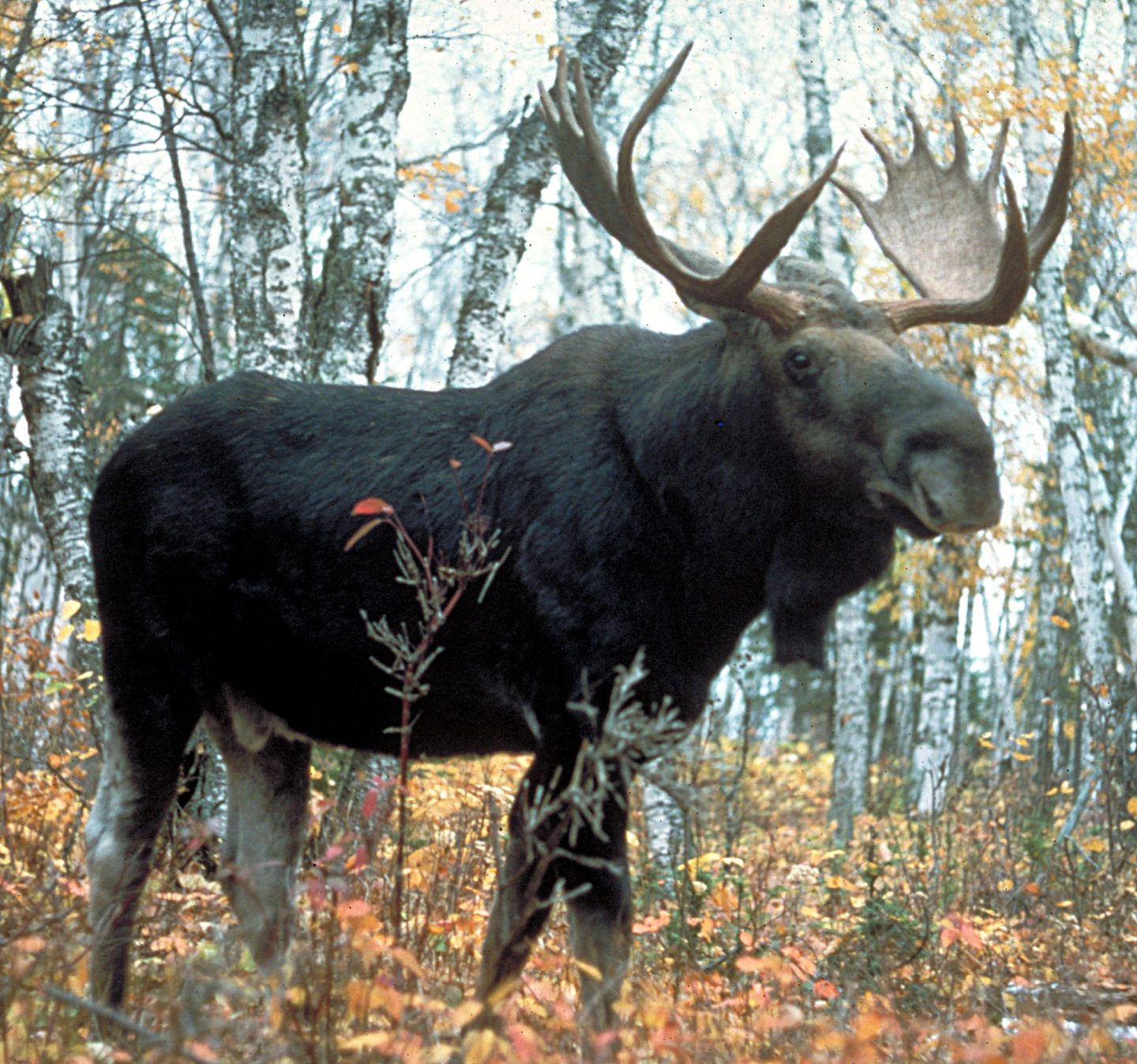I know that everyone will agree that Dr. Roy Rea did a great job of employing humour to add interest to his topic by getting creative with the title and following that theme throughout the presentation. I found that this tactic put me at ease, taking the formality out of the academic environment, without losing sight of the science and the take-away messages.
Not coming from a forestry background, I took note of even the simplest distinctions of softwood versus hardwood (it was nice of Dr. Rea to explain such things for the mixed crowd). However, I did know enough going into the presentation to realize that the reference to “hating hardwoods” was implying the forestry practice of favouring conifers over deciduous trees, which ties in directly to my research topic.
It didn’t take long for the question period to zero in on the forestry practice of using herbicides to kill competing deciduous species, and what effects this may have on moose habitat. Clearly, the main concern is that herbicide use potentially destroys all the non-conifer vegetation, creating a monoculture rather than allowing for a naturally diverse post-harvest regeneration that would be more beneficial to moose.
In response to one question, Dr. Rea explained that herbicides kill the entire plant, including the root mass, which could be hundreds of years old. I think this must be the case when the herbicide is applied directly, as from a backpack sprayer. My research involves the case in which glyphosate-containing herbicide is applied aerially, and it does not always kill the entire plant (especially for non-targeted species in the understory). This summer I visited cut blocks that had been sprayed anywhere from 1-12 years ago, and in all cases there were perennial plants growing back (though the sites sprayed only one year ago were certainly less lush). The question this brought to my thus-far-non-expert mind is: under what conditions is the entire plant killed, and how often does it occur that the plant survives and repopulates the ecosystem?
It is this matter of plant survival after being treated with glyphosate that I will be investigating. If the plant has been sprayed with glyphosate and survived, does it still contain glyphosate in its tissues? How long does it retain it for? What are the implications for animals eating the plant?
Aside from having their food sources instantly disappear, I wonder what the longer-term effects on moose are when herbicides are used in forestry operations. Are there subtler impacts affecting moose health after the vegetation recovers from the herbicide application? Is nutritional quality altered? I know that the results of my research will be of interest to Moosologists, and I hope to work with them to learn more about What Moose Want (nutritionally).


Recent Comments